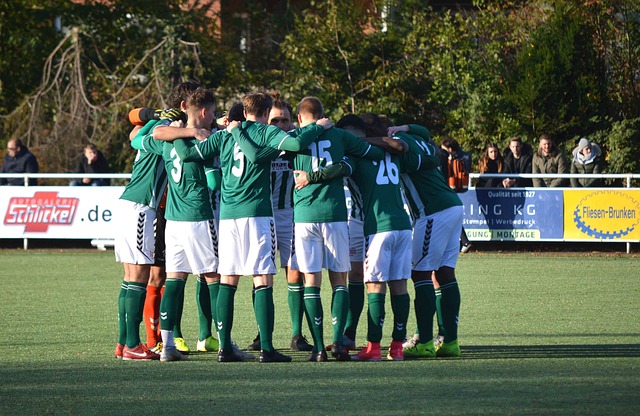
Team Spirit Drives Innovation in Tech Driven Workplaces
In fast‑moving technology firms, breakthroughs rarely come from solitary geniuses; they emerge when diverse minds collaborate toward a shared purpose. The invisible glue that holds these collaborative efforts together is often called team spirit. While the phrase evokes images of late‑night hackathons and open‑office camaraderie, its true power lies in how it reshapes leadership practices, drives scientific curiosity, and fuels sustainable workplace culture.
Defining Team Spirit in the Context of Science and Technology
Team spirit is a dynamic, collective mindset that blends trust, mutual respect, and a commitment to shared objectives. In research labs, software incubators, and product design studios, it manifests as open data sharing, constructive feedback loops, and a willingness to challenge conventional thinking without fear of ridicule.
- Shared ownership of goals, not just individual targets.
- Transparent communication channels that accommodate multiple viewpoints.
- A culture where mistakes are treated as learning opportunities.
Leadership Practices that Cultivate Team Spirit
Leaders are the architects of culture; their daily decisions ripple through the organization. To foster a thriving team spirit, leaders should prioritize the following practices:
- Modeling curiosity: By asking open questions and admitting knowledge gaps, leaders signal that learning is an ongoing process.
- Encouraging cross‑disciplinary dialogue: Regular interdisciplinary workshops break down silos and spark unexpected synergies.
- Recognizing collective achievements: Public acknowledgment of group milestones reinforces the idea that success is a joint endeavor.
- Providing psychological safety: Clear policies that protect employees from retaliation enable honest conversations about risks and failures.
- Allocating shared resources: Investing in shared labs, code repositories, and collaborative platforms demonstrates commitment to collective problem‑solving.
Case Study: The Quantum Research Lab at InnovateX
InnovateX, a mid‑size firm specializing in quantum‑enabled sensors, instituted a “Discovery Sprint” every quarter. The sprint required cross‑functional teams—physicists, software engineers, and marketing analysts—to co‑design prototypes within a 48‑hour window. By rotating team leads, employees gained exposure to different leadership styles, which strengthened mutual respect and accelerated idea generation.
“When the line between scientist and engineer blurred, the pace of our breakthroughs doubled,” said Dr. Maya Chen, lead physicist at InnovateX.
Measuring the Impact of Team Spirit on Innovation
Quantifying intangible qualities is challenging, yet several metrics can serve as proxies for a healthy team spirit:
- Rate of cross‑departmental publications and patents.
- Employee turnover and satisfaction scores related to teamwork.
- Time to market for new products that involve multiple teams.
- Number of internal initiatives that evolve into commercial offerings.
For example, a 20% increase in joint patents over two years correlated with a measurable rise in employee engagement scores in the same period, suggesting that collaborative environments drive both productivity and retention.
Challenges to Building Team Spirit
Despite its benefits, cultivating team spirit is not without obstacles. Common hurdles include:
- Hierarchical inertia: Rigid structures can stifle open dialogue.
- Competing metrics: Performance indicators focused solely on individual output may undermine collective goals.
- Remote work complexities: Virtual settings can erode spontaneous interactions that reinforce camaraderie.
- Cultural differences: Global teams may interpret feedback and leadership styles differently.
Addressing these challenges requires intentional policy design, continuous feedback mechanisms, and cultural competency training.
Technological Tools that Reinforce Team Spirit
While tools cannot replace human values, they can amplify the signals that foster cohesion. Effective technology solutions include:
- Integrated communication platforms that support both synchronous and asynchronous collaboration.
- Real‑time code review systems that encourage peer feedback.
- Project management dashboards with shared ownership metrics.
- Data‑visualization tools that make collective progress transparent.
When leaders ensure these tools are used for collaboration rather than micromanagement, they become catalysts for a vibrant team spirit.
Future Outlook: The Evolution of Team Spirit in Tech
As artificial intelligence and automation reshape routine tasks, the most valuable assets remain human creativity and collaborative intelligence. Leaders who embed team spirit into the DNA of their organizations will find themselves better positioned to pivot when market conditions shift. Anticipated trends include:
- Hybrid work models that blend in‑office spontaneity with remote flexibility.
- AI‑driven analytics to detect early signs of team fragmentation.
- Gamified collaboration platforms that reward collective problem‑solving.
- Increased emphasis on ethical leadership to maintain psychological safety.
In this evolving landscape, team spirit will continue to be a distinguishing factor between tech companies that merely survive and those that thrive.
Conclusion
Team spirit is not a buzzword; it is a measurable, leadership‑driven culture that empowers science, technology, and people to move beyond the status quo. By intentionally modeling curiosity, encouraging cross‑disciplinary dialogue, and investing in shared resources, leaders can turn individual brilliance into collective innovation. As firms navigate the complexities of a digital world, the enduring value of a united, supportive team will remain the most reliable catalyst for sustainable growth and breakthrough discovery.


